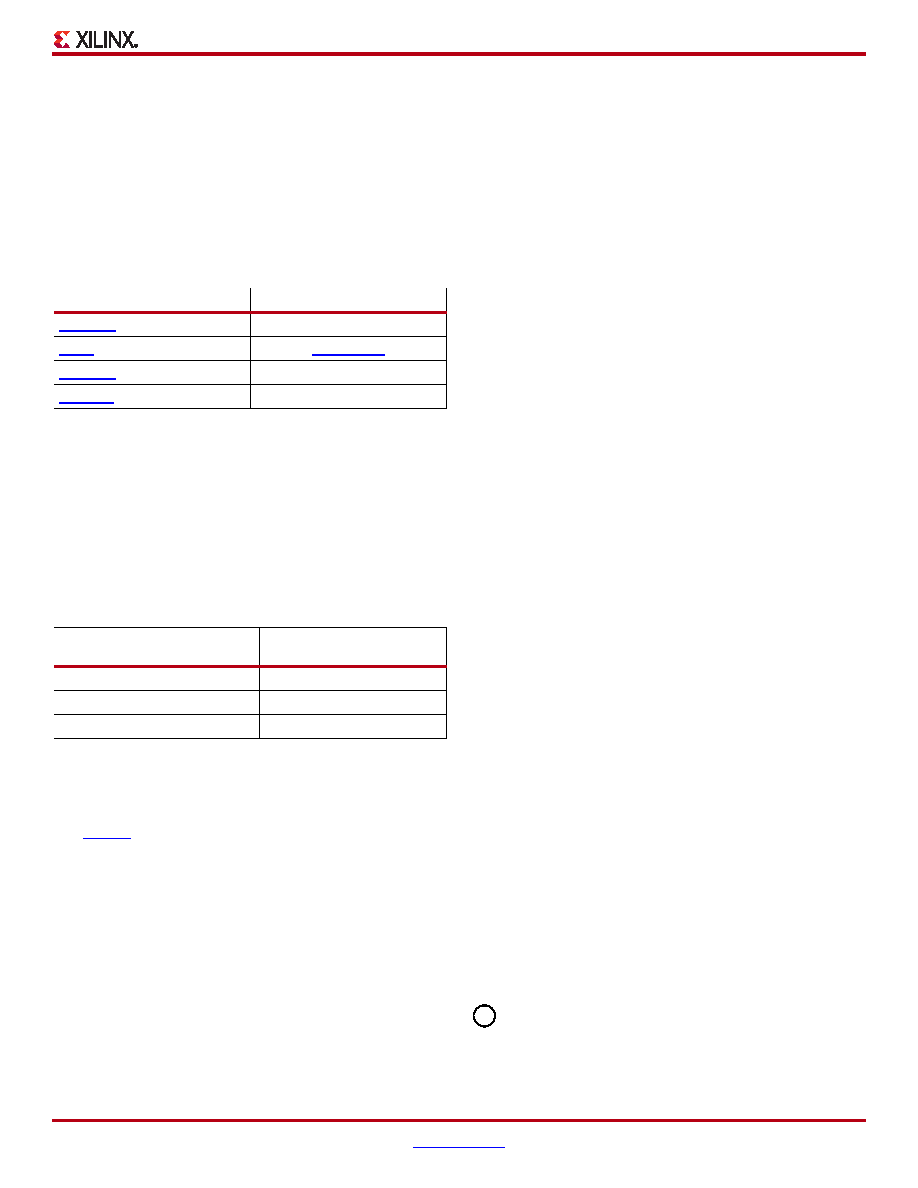参数资料
| 型号: | XC3S250E-4VQG100I |
| 厂商: | Xilinx Inc |
| 文件页数: | 216/227页 |
| 文件大小: | 0K |
| 描述: | IC FPGA SPARTAN-3E 250K 100-VQFP |
| 标准包装: | 90 |
| 系列: | Spartan®-3E |
| LAB/CLB数: | 612 |
| 逻辑元件/单元数: | 5508 |
| RAM 位总计: | 221184 |
| 输入/输出数: | 66 |
| 门数: | 250000 |
| 电源电压: | 1.14 V ~ 1.26 V |
| 安装类型: | 表面贴装 |
| 工作温度: | -40°C ~ 100°C |
| 封装/外壳: | 100-TQFP |
| 供应商设备封装: | 100-VQFP(14x14) |
| 其它名称: | 122-1715 XC3S250E-4VQG100I-ND |
第1页第2页第3页第4页第5页第6页第7页第8页第9页第10页第11页第12页第13页第14页第15页第16页第17页第18页第19页第20页第21页第22页第23页第24页第25页第26页第27页第28页第29页第30页第31页第32页第33页第34页第35页第36页第37页第38页第39页第40页第41页第42页第43页第44页第45页第46页第47页第48页第49页第50页第51页第52页第53页第54页第55页第56页第57页第58页第59页第60页第61页第62页第63页第64页第65页第66页第67页第68页第69页第70页第71页第72页第73页第74页第75页第76页第77页第78页第79页第80页第81页第82页第83页第84页第85页第86页第87页第88页第89页第90页第91页第92页第93页第94页第95页第96页第97页第98页第99页第100页第101页第102页第103页第104页第105页第106页第107页第108页第109页第110页第111页第112页第113页第114页第115页第116页第117页第118页第119页第120页第121页第122页第123页第124页第125页第126页第127页第128页第129页第130页第131页第132页第133页第134页第135页第136页第137页第138页第139页第140页第141页第142页第143页第144页第145页第146页第147页第148页第149页第150页第151页第152页第153页第154页第155页第156页第157页第158页第159页第160页第161页第162页第163页第164页第165页第166页第167页第168页第169页第170页第171页第172页第173页第174页第175页第176页第177页第178页第179页第180页第181页第182页第183页第184页第185页第186页第187页第188页第189页第190页第191页第192页第193页第194页第195页第196页第197页第198页第199页第200页第201页第202页第203页第204页第205页第206页第207页第208页第209页第210页第211页第212页第213页第214页第215页当前第216页第217页第218页第219页第220页第221页第222页第223页第224页第225页第226页第227页

Spartan-3E FPGA Family: Functional Description
DS312 (v4.1) July 19, 2013
Product Specification
89
Compatible Flash Families
The Spartan-3E BPI configuration interface operates with a
wide variety of x8 or x8/x16 parallel NOR Flash devices.
Table 61 provides a few Flash memory families that operate
with the Spartan-3E BPI interface. Consult the data sheet
for the desired parallel NOR Flash to determine its suitability
The basic timing requirements and waveforms are provided
(Module 3).
CCLK Frequency
In BPI mode, the FPGA’s internal oscillator generates the
configuration clock frequency that controls all the interface
timing. The FPGA starts configuration at its lowest
frequency and increases its frequency for the remainder of
the configuration process if so specified in the configuration
bitstream. The maximum frequency is specified using the
ConfigRate bitstream generator option.
Table 62 shows the maximum ConfigRate settings for
various typical PROM read access times over the
Commercial temperature operating range. See Byte
and UG332 for more detailed information. Despite using
slower ConfigRate settings, BPI mode is equally fast as the
other configuration modes. In BPI mode, data is accessed
at the ConfigRate frequency and internally serialized with
an 8X clock frequency.
Using the BPI Interface after Configuration
After the FPGA successfully completes configuration, all
pins connected to the parallel Flash PROM are available as
user I/Os.
If not using the parallel Flash PROM after configuration,
drive LDC0 High to disable the PROM’s chip-select input.
The remainder of the BPI pins then become available to the
FPGA application, including all 24 address lines, the eight
data lines, and the LDC2, LDC1, and HDC control pins.
Because all the interface pins are user I/Os after
configuration, the FPGA application can continue to use the
interface pins to communicate with the parallel Flash
PROM. Parallel Flash PROMs are available in densities
ranging from 1 Mbit up to 128 Mbits and beyond. However,
a single Spartan-3E FPGA requires less than 6 Mbits for
configuration. If desired, use a larger parallel Flash PROM
to contain additional non-volatile application data, such as
MicroBlaze processor code, or other user data, such as
serial numbers and Ethernet MAC IDs. In such an example,
the FPGA configures from parallel Flash PROM. Then using
FPGA logic after configuration, a MicroBlaze processor
embedded within the FPGA can either execute code directly
from parallel Flash PROM or copy the code to external DDR
SDRAM and execute from DDR SDRAM. Similarly, the
FPGA application can store non-volatile application data
within the parallel Flash PROM.
The FPGA configuration data is stored starting at either at
location 0 or the top of memory (addresses all ones) or at
both locations for MultiBoot mode. Store any additional data
beginning in other available parallel Flash PROM sectors.
Do not mix configuration data and user data in the same
sector.
Similarly, the parallel Flash PROM interface can be
expanded to additional parallel peripherals.
The address, data, and LDC1 (OE#) and HDC (WE#)
control signals are common to all parallel peripherals.
Connect the chip-select input on each additional peripheral
to one of the FPGA user I/O pins. If HSWAP = 0 during
configuration, the FPGA holds the chip-select line High via
an internal pull-up resistor. If HSWAP = 1, connect the
select line to +3.3V via an external 4.7 k
Ω pull-up resistor to
avoid spurious read or write operations. After configuration,
drive the select line Low to select the desired peripheral.
Refer to the individual peripheral data sheet for specific
interface and communication protocol requirements.
The FPGA optionally supports a 16-bit peripheral interface
by driving the LDC2 (BYTE#) control pin High after
configuration. See Precautions Using x8/x16 Flash PROMs
for additional information.
The FPGA provides up to 24 address lines during
configuration, addressing up to 128 Mbits (16 Mbytes). If
using a larger parallel PROM, connect the upper address
lines to FPGA user I/O. During configuration, the upper
address lines will be pulled High if HSWAP = 0. Otherwise,
use external pull-up or pull-down resistors on these address
lines to define their values during configuration.
Precautions Using x8/x16 Flash PROMs
Most low- to mid-density PROMs are byte-wide (x8)
only. Many higher-density Flash PROMs support both
byte-wide (x8) and halfword-wide (x16) data paths and
include a mode input called BYTE# that switches between
x8 or x16. During configuration, Spartan-3E FPGAs only
Table 61: Compatible Parallel NOR Flash Families
Flash Vendor
Flash Memory Family
M29W, J3D StrataFlash
S29
MX29
Table 62: Maximum ConfigRate Settings for Parallel
Flash PROMs (Commercial Temperature Range)
Flash Read Access Time
Maximum ConfigRate
Setting
250 ns
3
115 ns
6
45 ns
12
D
相关PDF资料 |
PDF描述 |
|---|---|
| 24LC21T-I/SN | IC EEPROM 1KBIT 400KHZ 8SOIC |
| 24LC21A/SN | IC EEPROM 1KBIT 400KHZ 8SOIC |
| 24LC21AT/SN | IC EEPROM 1KBIT 400KHZ 8SOIC |
| 24LC21AT-I/SN | IC EEPROM 1KBIT 400KHZ 8SOIC |
| 24LC21A-I/SN | IC EEPROM 1KBIT 400KHZ 8SOIC |
相关代理商/技术参数 |
参数描述 |
|---|---|
| XC3S250E-5CP132C | 制造商:Xilinx 功能描述:FPGA SPARTAN-3E 250K GATES 5508 CELLS 657MHZ 90NM 1.2V 132CS - Trays |
| XC3S250E-5CP132I | 制造商:XILINX 制造商全称:XILINX 功能描述:Spartan-3E FPGA Family |
| XC3S250E-5CPG132C | 功能描述:IC FPGA SPARTAN-3E 250K 132CSBGA RoHS:是 类别:集成电路 (IC) >> 嵌入式 - FPGA(现场可编程门阵列) 系列:Spartan®-3E 标准包装:40 系列:Spartan® 6 LX LAB/CLB数:3411 逻辑元件/单元数:43661 RAM 位总计:2138112 输入/输出数:358 门数:- 电源电压:1.14 V ~ 1.26 V 安装类型:表面贴装 工作温度:-40°C ~ 100°C 封装/外壳:676-BGA 供应商设备封装:676-FBGA(27x27) |
| XC3S250E-5CPG132C4124 | 制造商:Xilinx 功能描述: |
| XC3S250E-5CPG132I | 制造商:XILINX 制造商全称:XILINX 功能描述:Spartan-3E FPGA Family |
发布紧急采购,3分钟左右您将得到回复。